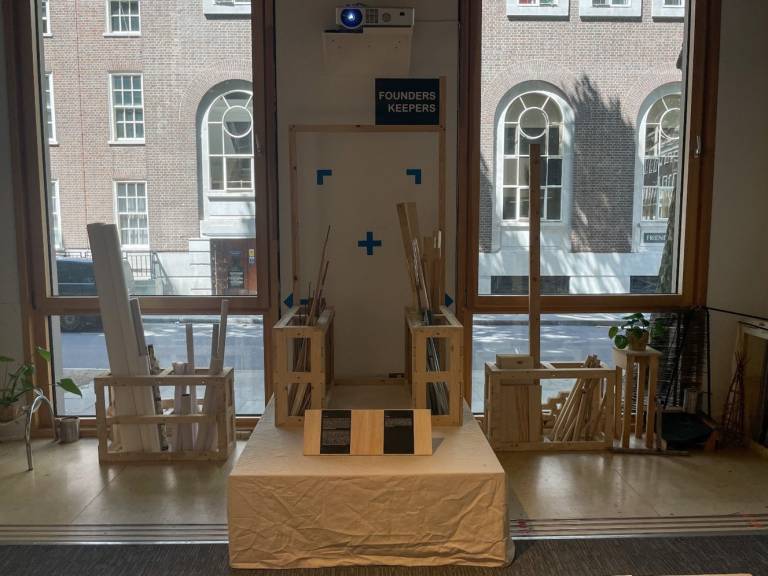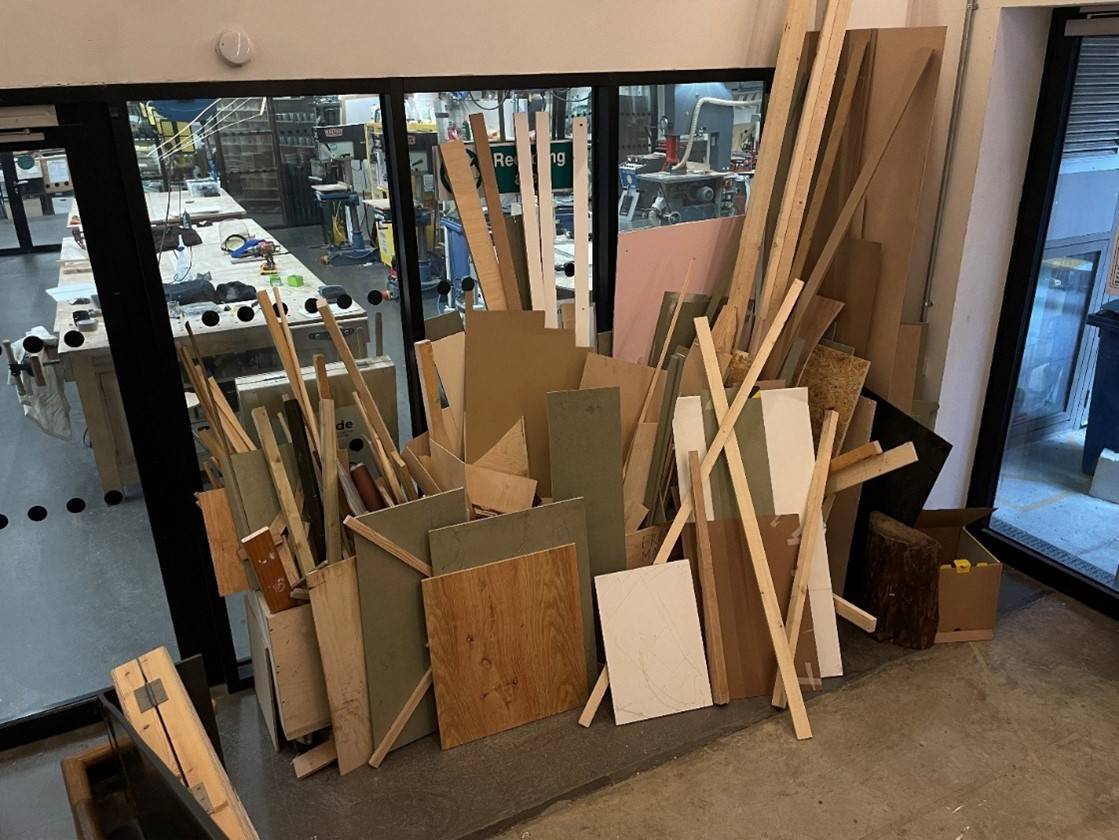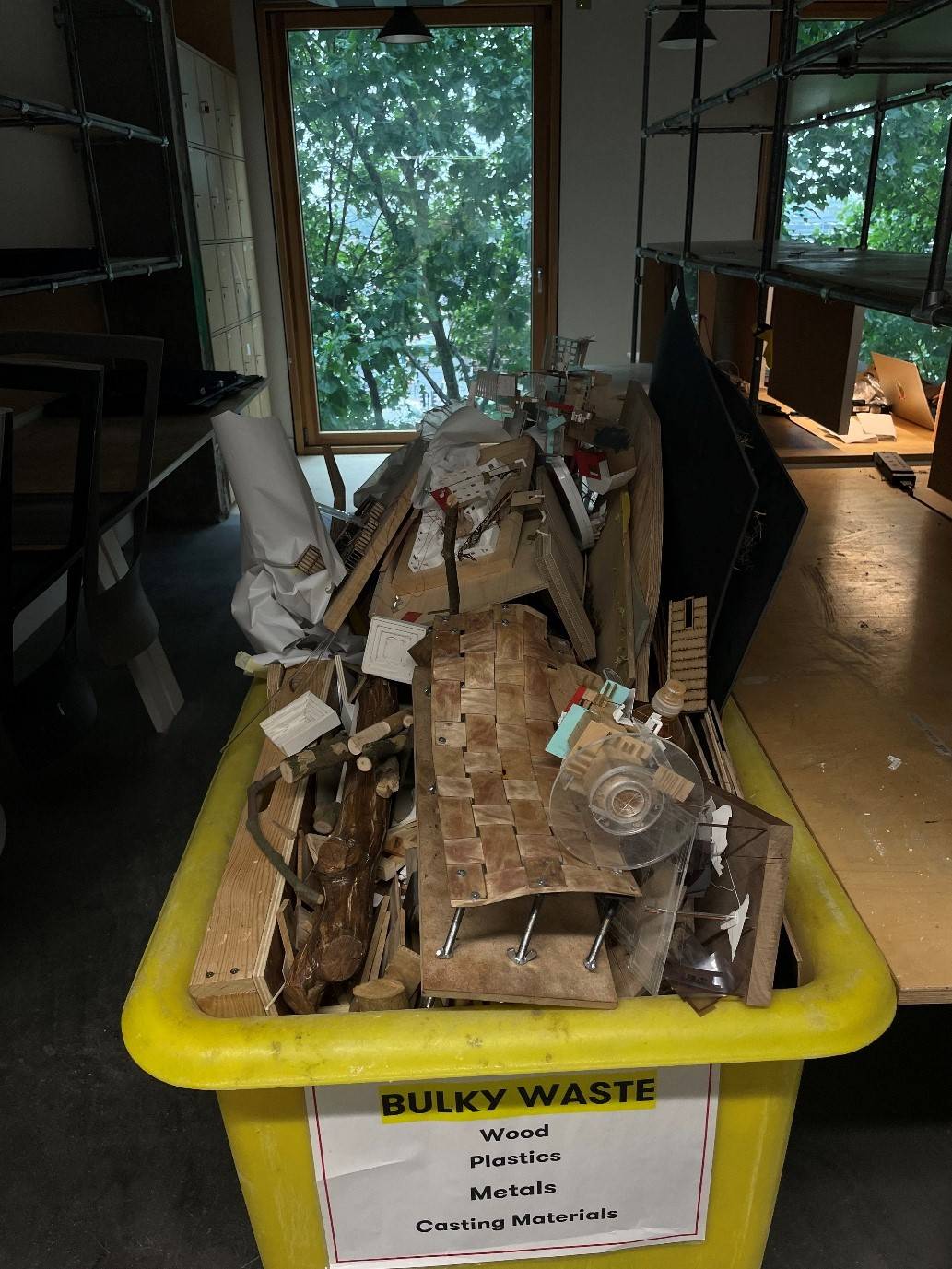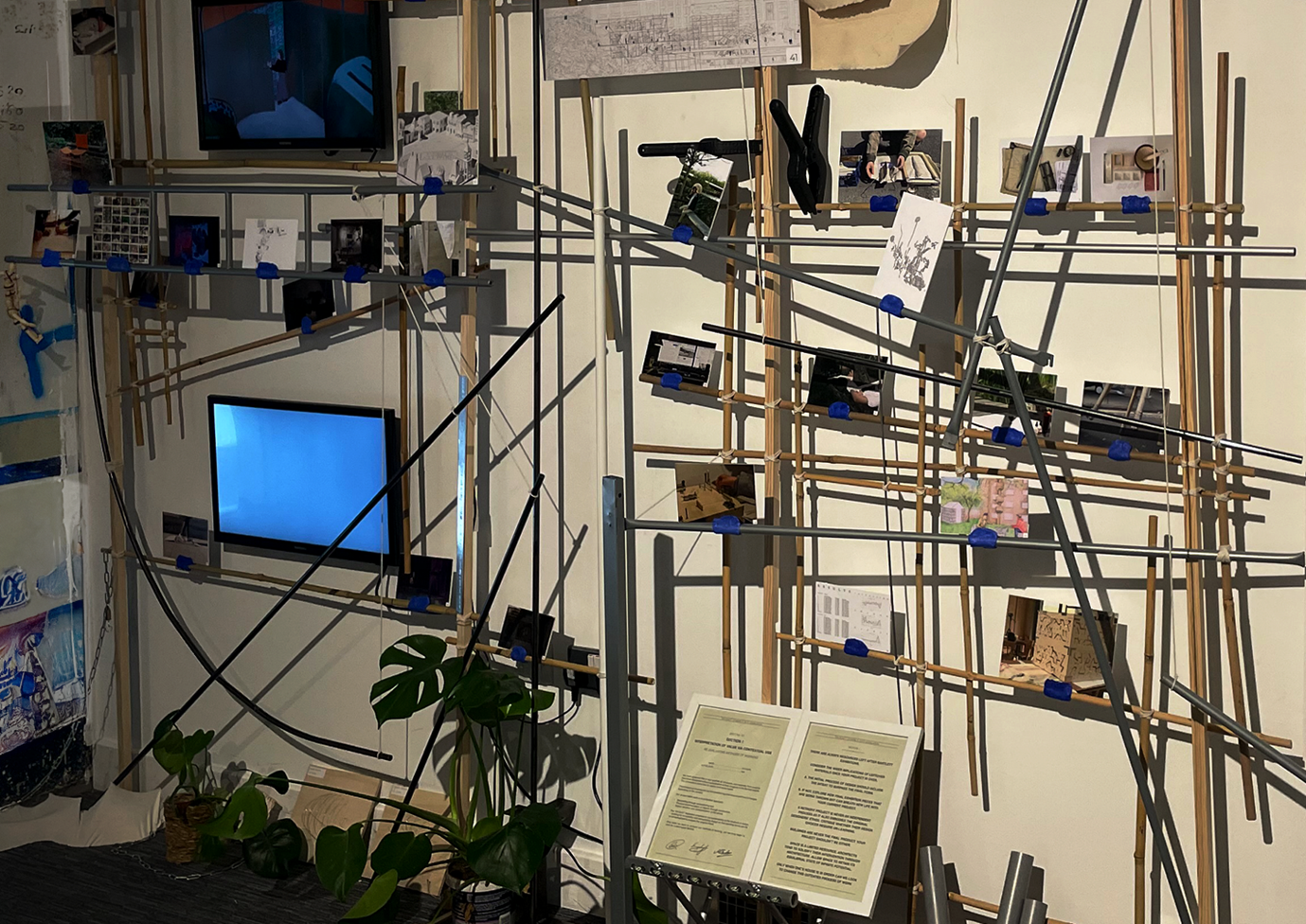Founder’s Keeper’s – a circular materials approach in the Bartlett School of Architecture
18 July 2023
Two Architecture and Interdisciplinary Studies BSc students discuss how, when it comes to encouraging greater circularity of 'waste' materials, context can be everything.

Extraction, consumption and disposal of materials and products imposes a heavy burden on the Earth’s resources and ecosystems. For many organisations, including The Bartlett, procurement of products and materials also accounts for a large share of their greenhouse gas emissions. Reducing consumption and waste through a more 'circular' approach to materials management, that prioritises reuse and repurposing of materials, can make a significant contribution to cutting our greenhouse gas emissions and wider environmental footprint. In this blog, Marius Sidaravicius and Harang Seo, from Architecture and Interdisciplinary Studies BSc, describe their work in increasing material circularity within the Bartlett School of Architecture.
An exciting project is currently underway, led by students from the BSc in Architecture & Interdisciplinary Studies (AIS), in collaboration with the BSASoc (Bartlett School of Architecture Society) and B!CAN (Bartlett Climate Action Network). This initiative revolves around addressing material waste at the Bartlett and exploring systematic ways to repurpose it. This response aligns with ongoing concerns about material care and management, building upon recommendations from the BSA Sustainable Materials Strategy research report for the Bartlett Net Zero Action Group released last year.
Everything started from an AIS design project that revolved around the idea of the prefix 'un-'. The project challenged us to think about how processes of removal and reversal can be made part of design. Naming our project 'Un-contextualise', we looked to repurpose and reconstitute waste created from the Bartlett Autumn and Summer shows, with a view to expanding similar principles across the Bartlett overall.

Scrap materials accumulated from the Bartlett Summer Show setup
An early defining point in our project was when multiple students around the Bartlett were asking if they could take some of the materials we had collected, which were at that time being stored in a big yellow tub next to the main elevator, and which they saw as having potential for their own projects. What was interesting was that by simply placing the materials in a way that uncontextualised them as accumulated waste, and recontextualised them as available materials, suddenly they seemed to be more inherently valuable. This led us to question the nature of value as something amenable to re-interpretation, and encouraged us to see the pertinent role of design in helping to assign new values to waste materials.
Encouraged by this discovery, during the following term, we continued to scavenge the Bartlett for any leftover waste material which had the potential to be reused for our projects. We were able to salvage past student work and leftover materials from skips, bins and offcut pieces from workshops.

We found that some leftover materials like paper, metal poles or fillings could still be in a relatively raw state which lent itself to new creations without any obvious resonance to the previous projects of which they had been part. But other materials, such as those left over from past student projects, were much more imprinted with the roles they had played within the creations of previous students. This opened up interesting questions around whether the reuse of materials that continue to bear the imprint of values of previous works should continue to reflect this, or whether our role was to completely recontextualize them in such a way that they would bear no resemblance to their former lives. On one hand, we considered how retrofit projects for old buildings retain the characteristics of old values where architects pay homage to them in a more modern and updated environment. Yet on the other hand, we observed the beauty in the 'reader – writer' relationship where the author of any creative piece of work has no influence in how it will be interpreted by the observer. The author cannot dictate what the works mean to the public.
We discovered that as designers, we assign our values to our work, and when it gets to the end of the project, there is an expiry date to the value we have assigned it. If the values we assign to our work are too constraining, this limits the potential for reuse and recontextualisation. This can be observed by the bulk of student projects and materials ending up in skips and bins. However, if we designed with the intention of the finished form being reused and recontextualised from the initial design process, then there would be a lot less waste produced as a result. We wanted to highlight that the notion of authorship and responsibility are closely intertwined with this approach of work, which enables the endowment of work to new authors. Alongside that, we thought of how to influence a better culture of care for materials within our environment.
As the research project continued, students collaborated with the Bartlett facilities team to intercept discarded materials during the ongoing studio clearances. These salvaged materials were then showcased for a day during the Summer Show in the AIS Open Stage, where an experimental shop named 'Founder's Keeper's' was established alongside a structure designed for permanent display in the same area. Every element of this display was meticulously crafted using the collected waste, ensuring easy deconstruction for potential future reuse. The shop exhibit consisted of dowels, metal rods, wood planks, grey card, and a diverse array of paper, ranging from large rolls of tracing paper to high-quality sheets of cartridge paper. Alongside the materials, there was a price listing for the materials: this included financial costs, but also potential savings, both financial and material, in addition to the savings in CO2 emissions. By arranging these materials neatly, they suddenly took on an allure, resembling items found in a real shop.

The ultimate goal is to foster a sustainable and circular materials culture by salvaging and reusing resources from across the university. Currently, materials in studios that can clearly be reused are intercepted by the facilities team, and laid out for rescue, disappearing quickly, avoiding the need for storage but also without any formal system for allocation based on student need. But, without a formal system in place to salvage materials, the resources saved remain relatively limited. The hypothesis of the ongoing research is that a student-led waste material interception group could help reduce maintenance costs and CO2 emissions, while simultaneously helping students out with convenient materials and bringing the Bartlett to a more progressive circular economy. The research also proposes that, with a structured system of circular material reuse, there could be potential to allocate materials based on student needs, helping those in need of anything to have access to common materials from portfolios left behind after the studio clearances. As part of ongoing research through studio clearances and the next Summer Show take down, we aim to investigate and address this gap, with proposals for a student-led waste interception process, working alongside and supporting facilities, with the potential to create a permanent student-led Free Shop.
 Close
Close

